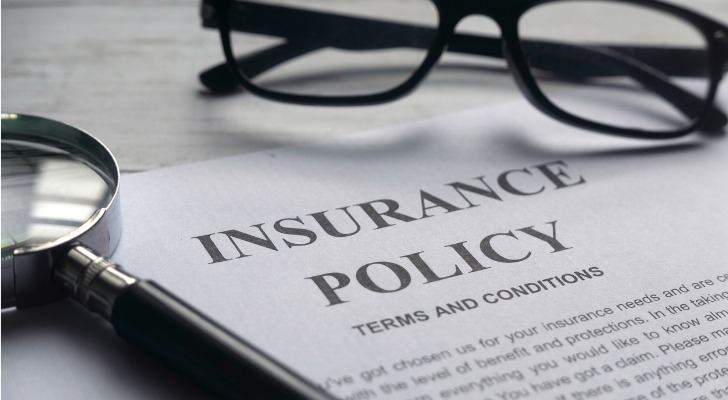In the dynamic world of business, mistakes are bound to happen. But when these errors result in financial setbacks for clients, it can result in pricey lawsuits for businesses. Errors and omissions (E&O) insurance protects businesses from claims of negligence or inadequate work, serving as a critical safeguard for individuals and businesses in various industries.
A financial advisor can help you assess your insurance needs. Speak with a fiduciary advisor today.
How Errors and Omissions Insurance Works
When professionals provide services or advice to clients, they are expected to meet certain standards of care and competence. However, mistakes can happen or clients may perceive that they have received inadequate service. In such cases, clients may file lawsuits seeking damages.
Also known as professional liability insurance, E&O can help spare professionals from significant financial losses, including legal defense costs, as well as settlements or judgments. This type of insurance is not a one-size-fits-all solution since policies are typically tailored to the specific needs and risks of a profession.
Take a real estate agent who unintentionally fails to disclose a property defect to a customer. If the buyer identifies the defect post-purchase and decides to sue, E&O insurance would shoulder the legal defense costs and any settlements or judgments, saving the agent from potentially catastrophic financial losses.
To benefit from E&O insurance, professionals need to understand their policy terms, including coverage limits and any exclusions that may apply. It’s crucial to report potential claims or incidents to the insurer promptly.
Expected Costs of E&O Insurance

The cost of E&O insurance can vary since it’s influenced by factors like business size, location, coverage limits and deductible. The industry in which a business operates can also play a substantial role in determining the premiums. Professions with a higher perceived risk of errors or omissions, such as medical practitioners or financial advisors, typically face higher premiums when compared with lower-risk industries.
Higher coverage limits will naturally result in higher premiums. Businesses and professionals should carefully assess their potential liability exposure and select a coverage limit that aligns with their specific needs and budget.
Furthermore, the size and revenue of a business can impact the cost of E&O insurance. Larger businesses with more extensive operations often pay higher premiums due to increased exposure. Smaller businesses may find more affordable options tailored to their scale.
According to The Hartford, an insurance company that sells home, auto and business policies, E&O insurance for small businesses can range from $500 to $1,000 per employee. As a result, a small business with 15 employees could pay between $7,500 and $15,000 in annual premiums.
However, businesses do have options to potentially curtail these premiums without compromising on the coverage, such as implementing risk management procedures or increasing their deductible.
What E&O Insurance Covers
E&O insurance primarily safeguards against allegations of negligence, misrepresentation, good faith and fair dealing violations, as well as inaccurate advice.
To understand this in practical terms, consider a scenario where an engineer makes an error in the project blueprint, leading to construction losses. E&O insurance would cover defense costs, settlements and judgments, therefore shielding the engineer’s firm. But it’s vital to remember that E&O coverage may differ across policies and insurers, calling for cautious review and consultations with insurance professionals for a comprehensive understanding.
E&O insurance typically operates on a “claims-made” basis. This means that it covers claims made during the policy period, regardless of when the alleged error or omission occurred. However, it’s crucial to maintain continuous coverage because a gap in coverage could leave you exposed.
What E&O Insurance Does Not Cover

While E&O insurance guards against many incidents, it typically does not cover intentional wrongdoing, illegal activities or claims under the purview of other insurance types such as general liability or workers’ compensation.
These exclusions stem from the principle that insurance shouldn’t provide a safe harbor for intentional harm or illegal actions. Businesses need to understand these coverage limitations fully to avoid unwelcome surprises at the time of claims.
When You Might Need E&O Insurance
Businesses providing profit-based advice, professional services or consulting might find a greater need for E&O insurance. They face higher risks thanks to potential issues such as a recommended system failure, leading to client losses. Without E&O insurance, the resulting lawsuit could financially break them. Therefore, E&O insurance becomes an essential element of a business’s risk management strategy, particularly for high-risk industries or those dealing with substantial client funds.
Bottom Line
E&O insurance plays a pivotal role in insuring businesses against claims of negligence or inadequate work. However, it doesn’t guarantee complete protection from such claims and shouldn’t be seen as a fail-safe solution to mitigate business risks. Despite covering legal defense costs and damages, businesses should remain proactive in maintaining a high standard of professional service.
Insurance Tips
- If you’re in the market for life insurance, chances are you’re wondering how much coverage you should have. SmartAsset’s life insurance calculator can help you estimate how much coverage you should buy to ensure your loved ones are cared for in the even that something happens to you.
- A financial advisor can help you manage risk and evaluate your insurance needs. Finding a financial advisor doesn’t have to be hard. SmartAsset’s free tool matches you with up to three vetted financial advisors who serve your area, and you can have a free introductory call with your advisor matches to decide which one you feel is right for you. If you’re ready to find an advisor who can help you achieve your financial goals, get started now.
Photo credit: ©iStock.com/AzmanL, ©iStock.com/Mohamad Faizal Bin Ramli, ©iStock.com/PeopleImages
